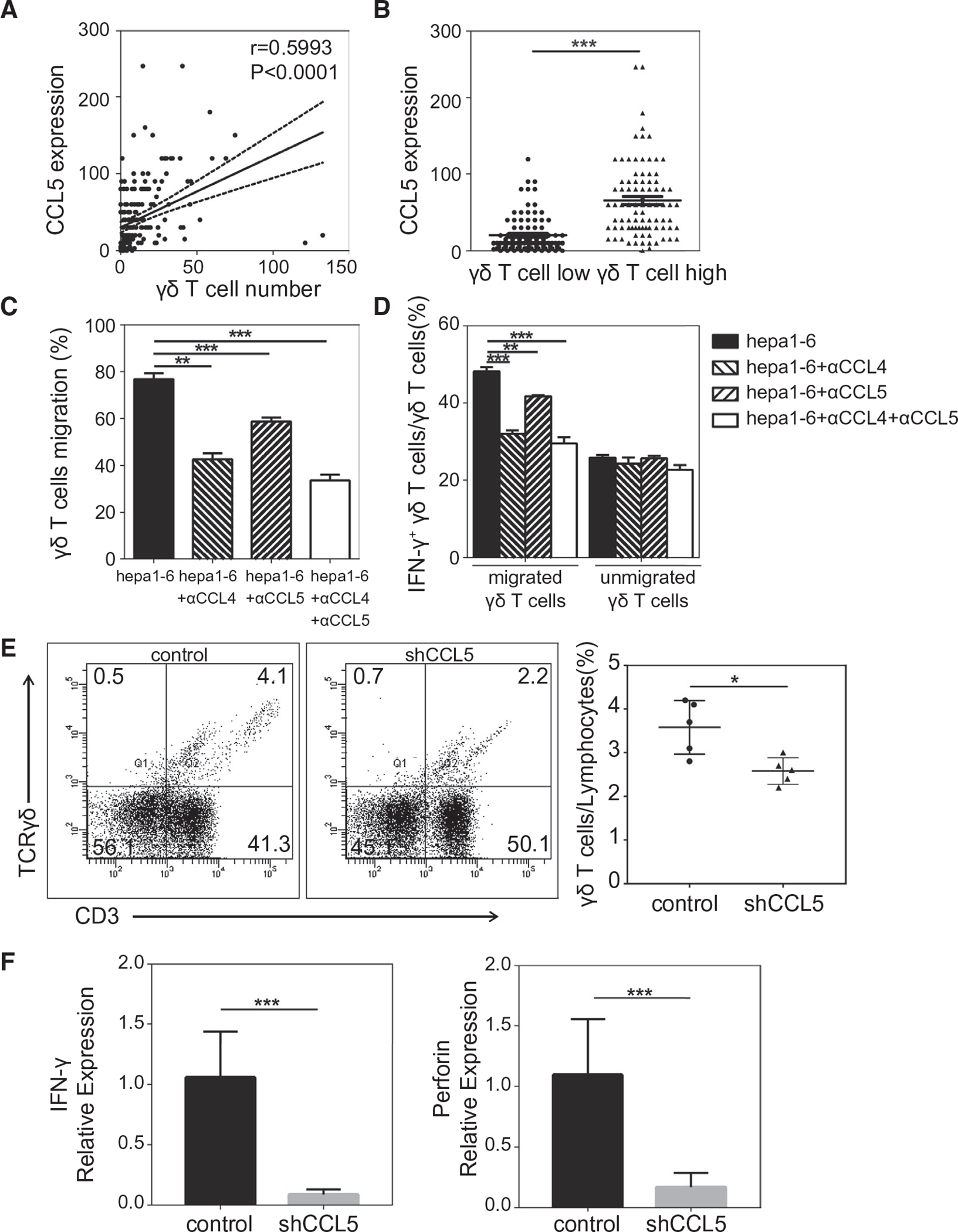FIG. 6.

Roles of tumor-cell–derived CCL4/5 on γδ T cells. (A) Spearman’s correlation analysis between CCL5 expression level and TCRγδ-positive staining cells number in the 182 FFPE HCC tissues. (B) Comparison of CCL5 expression levels between the high and low γδ T-cell-infiltrating groups. (C) Results of transwell migration assay, reflected by the proportion of chemo-attracted γδ T cells by murine hepatoma cell line Hepa1–6 with or without neutralized anti-CCL4/5. (D) Comparison of IFN-γ expression levels in transmigrated and unmigrated γδ T cells in the coculture model with Hepa1–6. (E,F) B6 mice were treated with intrahepatic trasplantation of either CCL5 shRNA-transduced or control oligo-transduced Hepa 1–6. At day 14, tumor-bearing livers were excised and used for the analysis of γδ T-cell proportion by flow cytometry (E) or analysis of expression levels of IFN-γ and perforin by real-time RT-PCR (F). Abbreviation: shCCL5, chemokine (C-C motif) ligand 5 with short hairpin RNA. *P < 0.05; **P < 0.01; ***P < 0.001.
